Body
This guide pertains to Ultra Course View.
If your course is in Original Course View, see the Original Course View tutorial collection.
Parallel Grading Overview
Parallel Grading allows for two graders to be assigned to grade submitted work for an assignment. One person will hold the role of "Grader", the other of "Reconciler". The instructor determines which individuals hold which roles.
Parallel grading can be enabled even after students make submissions. The system randomly assigns the graders you choose so each student has two graders for the assessment. The grading workload is distributed evenly among the graders. Graders can only open the submissions for the students assigned to them. Parallel Grading differs from Anonymous Grading in which student names are hidden as you grade their assignment or test materials. You can turn on Anonymous Grading for Parallel Grading if desired.
Students aren't notified that the assessment has more than one grader unless you inform them. Students only see the final grade and feedback the reconciler provides.
You cannot create groups or add questions when Parallel Grading is enabled. Graders, teaching assistants, and course builders can't enable or disable Parallel Grading -- only those with the instructor role in the course can do this.
Watch: Grading Options video
See:
In the Assignment or Assessment where Parallel Grading is desired, click the Settings gear icon to open the Settings panel, then check the box for 2 graders per student under the Evaluation options section. If Anonymous Grading is also desired, check this box as well.
Select the Assign Graders link that appears:
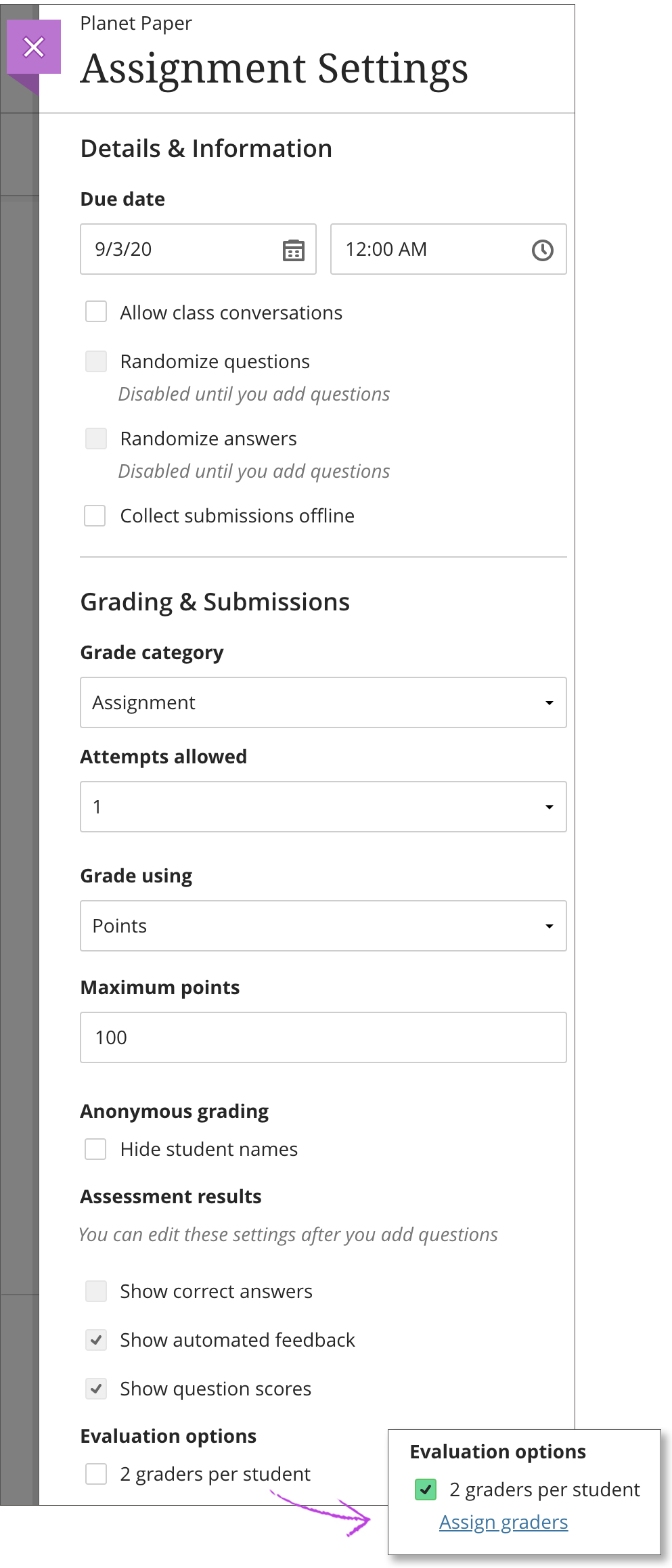
On the Assign Graders page, the roles you assign pertain only to the current assignment/assessment.
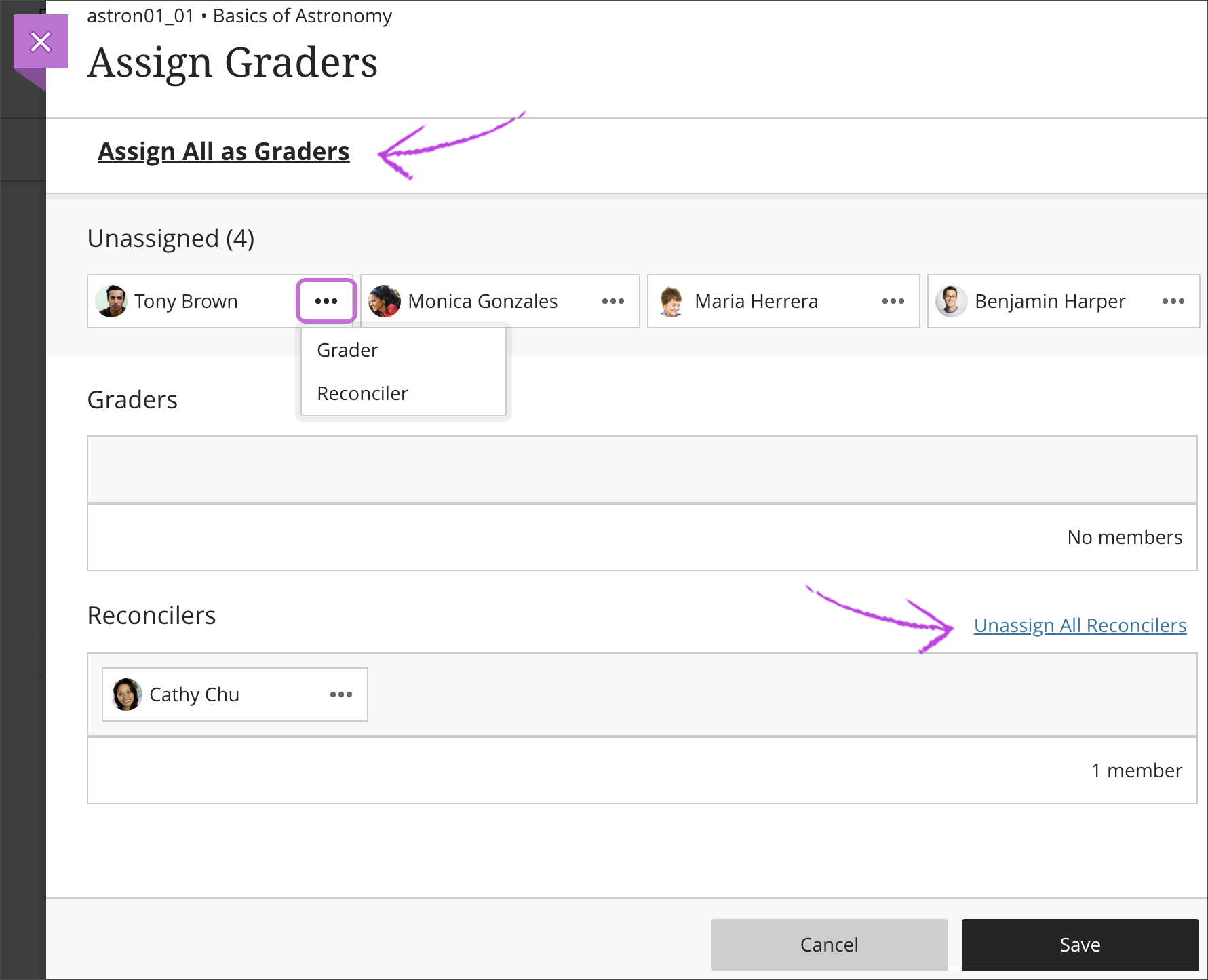
Assign Graders
Your teaching assistants and graders appear in the first Unassigned list.
You can select all with the Assign All as Graders link or click on the 3 dots next to each user's name and assign the role of eithert Grader or Reconciler. Assigned graders appear in the Graders list. Open a grader's menu and select Unassign if needed.
Reminder: The grading workload is distributed evenly among the graders.

Assign Reconcilers
Users with the instructor role automatically appear in the Reconciler's List once the Assign Graders link is clicked. To adjust, if needed, click the 3 dots next to a reconciler's name and select Unassign if needed. You can select a list's Unassign All link to remove all users from Graders or Reconcilers. For example, you can have your teaching assistant determine all the final grades and unassign yourself. You can have multiple Reconcilers.
No user can be both a Grader and a Reconciler at the same time. However, you can assign a user a different role for an assessment, even after students make submissions.
Select Save when you're finished. Parallel Grading works best with multiple graders and at least one Reconciler. If you don't have at least two graders and one Reconciler, the system gices a warning. You're allowed to save without the minimal recommendation.

What Happens if I Unassign Users or Disallow Them Course Access in the Roster?
Use caution before you make changes to Graders and Reconcilers after grading has begun.
- Unassigned Reconcilers lose access to assign final grades, but prior work is maintained. If a Reconciler assigns some final grades and then is unassigned or disallowed in the roster, the final grades remain. Another Reconciler can make changes to those final grades.
- Unassigned Graders' previously completed evaluations are retained. Incomplete evaluations are no longer associated with the students. The system evenly distributes the work to the remaining Graders.
If a student already has grades from two Graders and then one Grader is unassigned, the two grades are retained. A third Grader is added. Even if you've reconciled and posted some grades, a third Grader is added. The third Grader only sees attempts are ready to grade if you haven't reconciled grades. You may have three grades to reconcile for some attempts if a Grader is removed during the Parallel Grading process.
When you disallow a user's access in the roster and then allow access again, the user appears in the Unassigned List on the Assign Graders page.
You can disable Parallel Grading for an assessment even after submissions exist or Graders have provided grades and feedback. The Graders' provisional grades are removed, but the system retains them. If you enable Parallel Grading again, the previous provisional grades and feedback are restored.
If you disable Parallel Grading after you post grades, the final grades remain. No record of the provisional grades remain.
Graders, teaching assistants, and course builders can't disable parallel grading.
When you enable Parallel Grading, Graders can only access the assessment attempts assigned to them. Graders do not receive notifications in the Activity Stream when attempts in the Parallel Grading workflow are ready to grade. Reconcilers do receive notifications when grades are ready to reconcile.
As the final grader, the Reconciler can't assign grades for Graders.
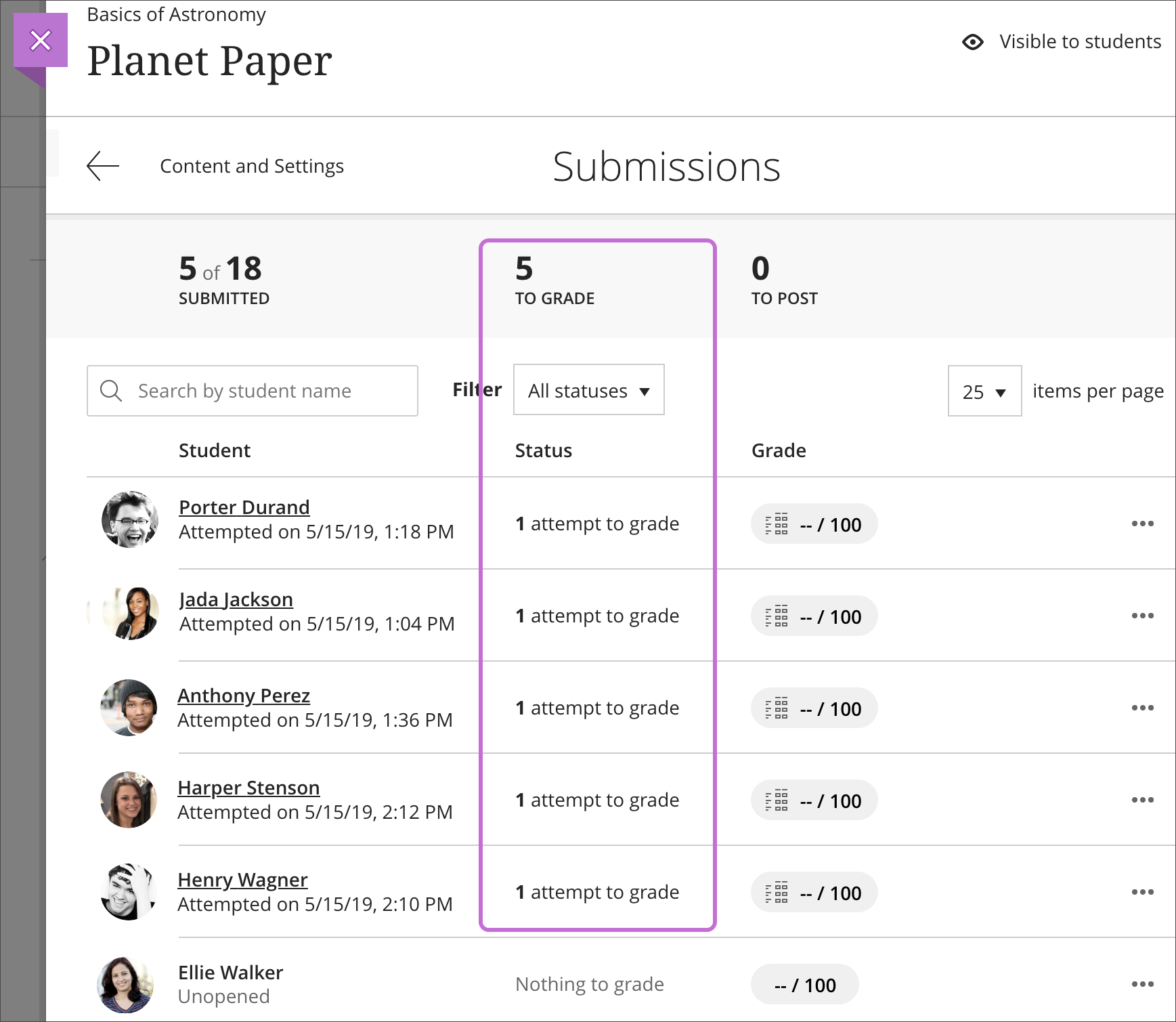
In the Anonymous Grading workflow, Graders also can only access the submissions assigned to them. The grading list is blank until students make submissions.
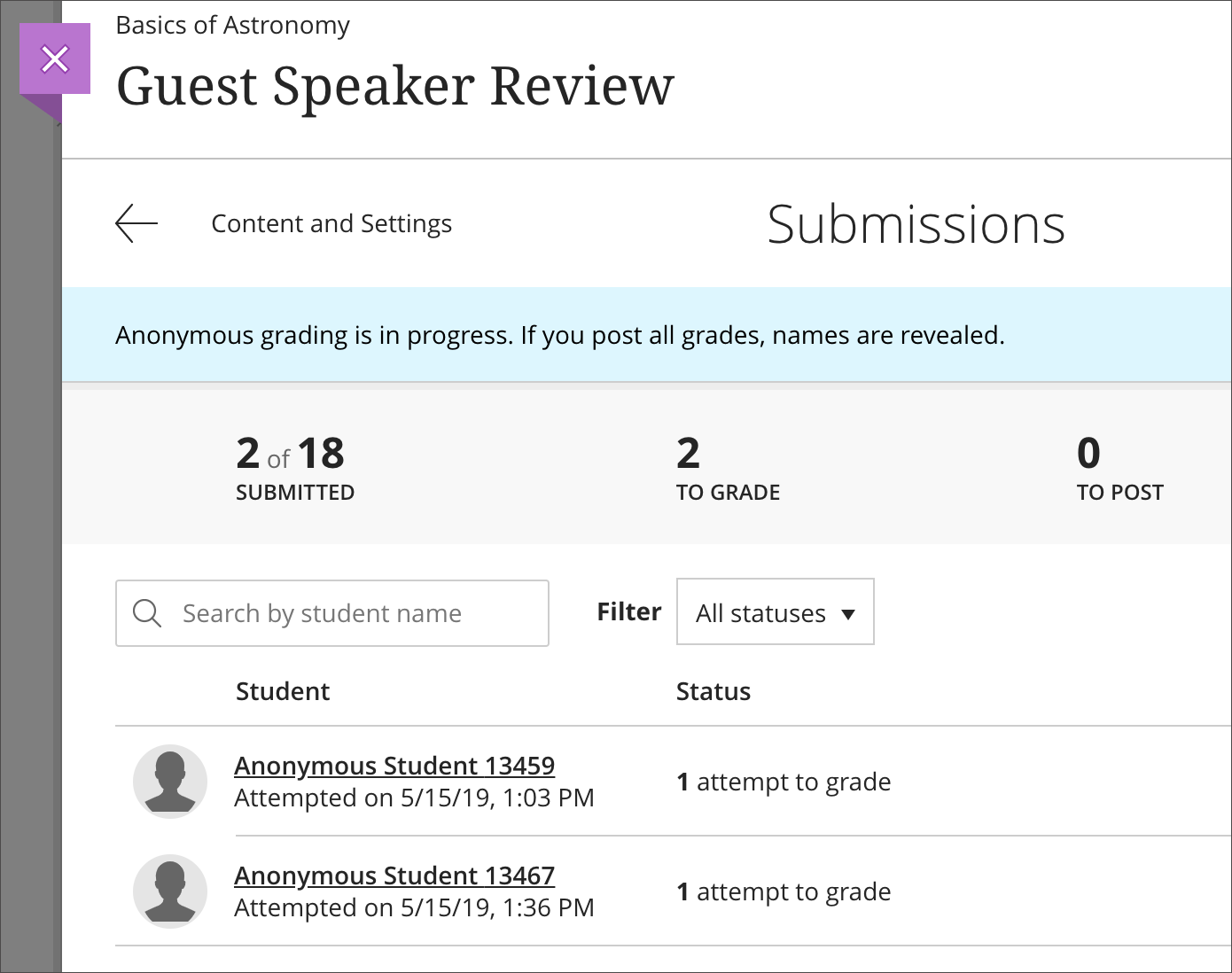
The annotations a Grader adds to students' files aren't available to students or Reconcilers.
After Graders provide grades and feedback for their sets of submissions, their work is complete. Graders can't post grades. Instructors and Reconcilers can't view a Grader's rubric or edit a Grader's grade and feedback.

After the Reconciler posts grades, a Grader can only view the Reconciler's final grades, rubrics, and feedback. Graders can't edit their evaluations after grades are posted.

Multiple Attempts
When you allow multiple attempts on an assessment, Graders can view their workload on the Submissions page. The final Grader can reconcile grades even if Graders don't grade all the attempts.
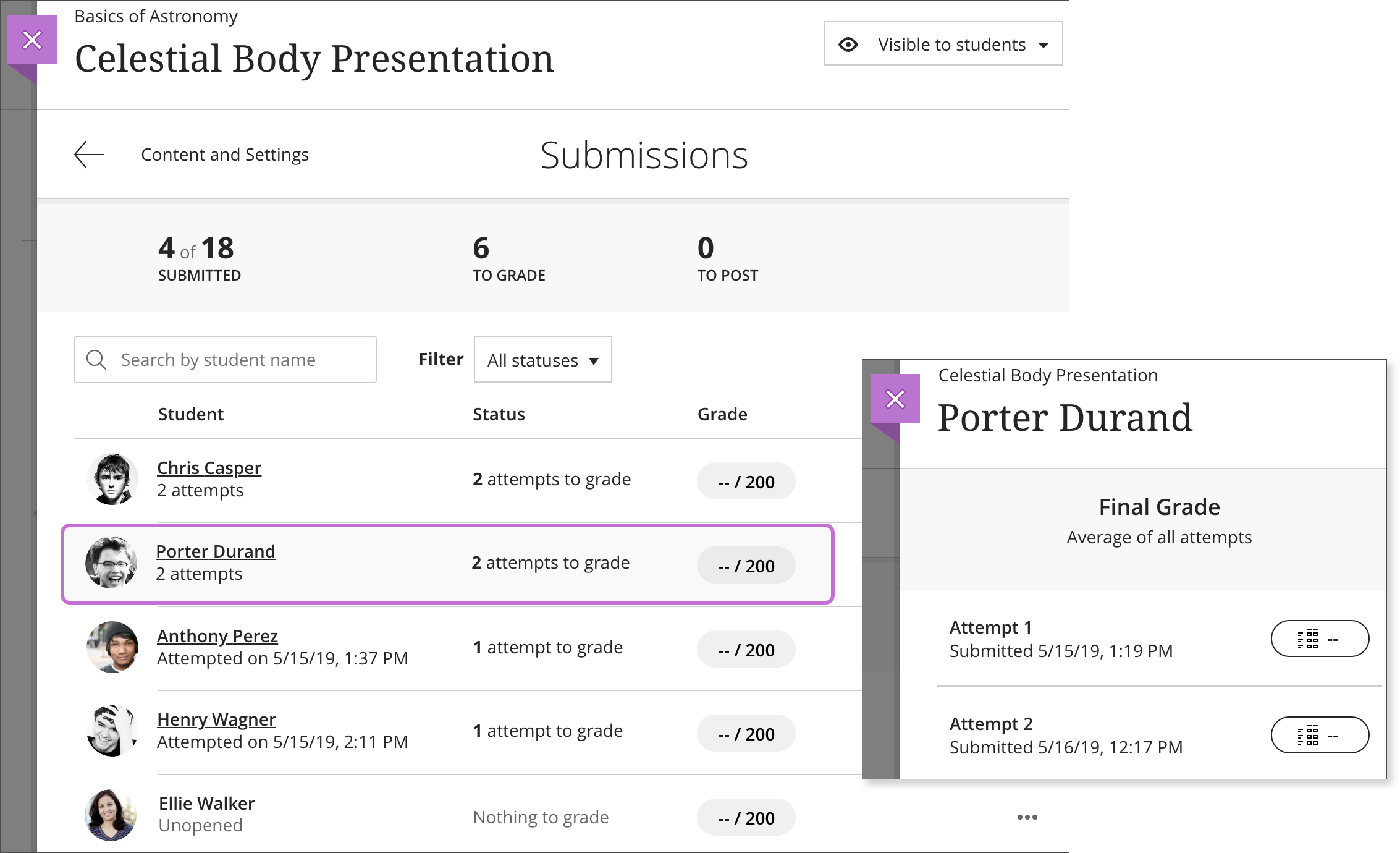
When grades are ready to reconcile, a notification is provided in the Activity Stream on the Bb homepage to those with a Reconciler role. The notification is received after the assigned Graders have graded one student's attempt.
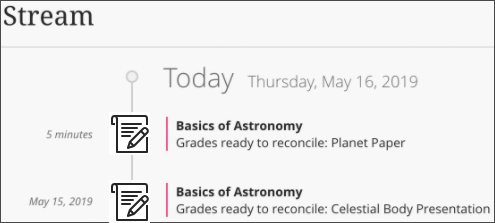
A Needs Reconciling section also appears on the Gradebook Overview tab. In this section, reconcilers can easily access all items ready for reconciliation.
Image 1. The reconciler's view of the Needs reconciling section on the gradebook Overview tab

- The Needs Reconciling section is hidden when the grader has no items for reconciliation.
- Graders can select Reconcile to open the Submissions tab for the item. They can review grades and feedback from others before determining the final grade.
- The Gradebook tab displays an exclamation point when there are items to reconcile or post.
Reconcile a Single Attempt
You can review each Grader's grade and feedback before you determine the final grade. You can reconcile grades even if Graders don't grade all the attempts.

- Assign grades. Select the grade pill to assign a grade or open the rubric. Reminder: You can't view a Grader's rubric or annotations on student files. You also can't edit a Grader's grade and feedback.
- Review feedback. Select a feedback icon to open the Feedback panel and review the Graders' feedback.
- Add your feedback. Students won't see the Graders' feedback, but your feedback (those with the Reconciler role) appears when you post the final grades.
After you post the final grades, Graders can only see the final grades and feedback. Graders can't access their evaluations to edit them after final grades are posted.
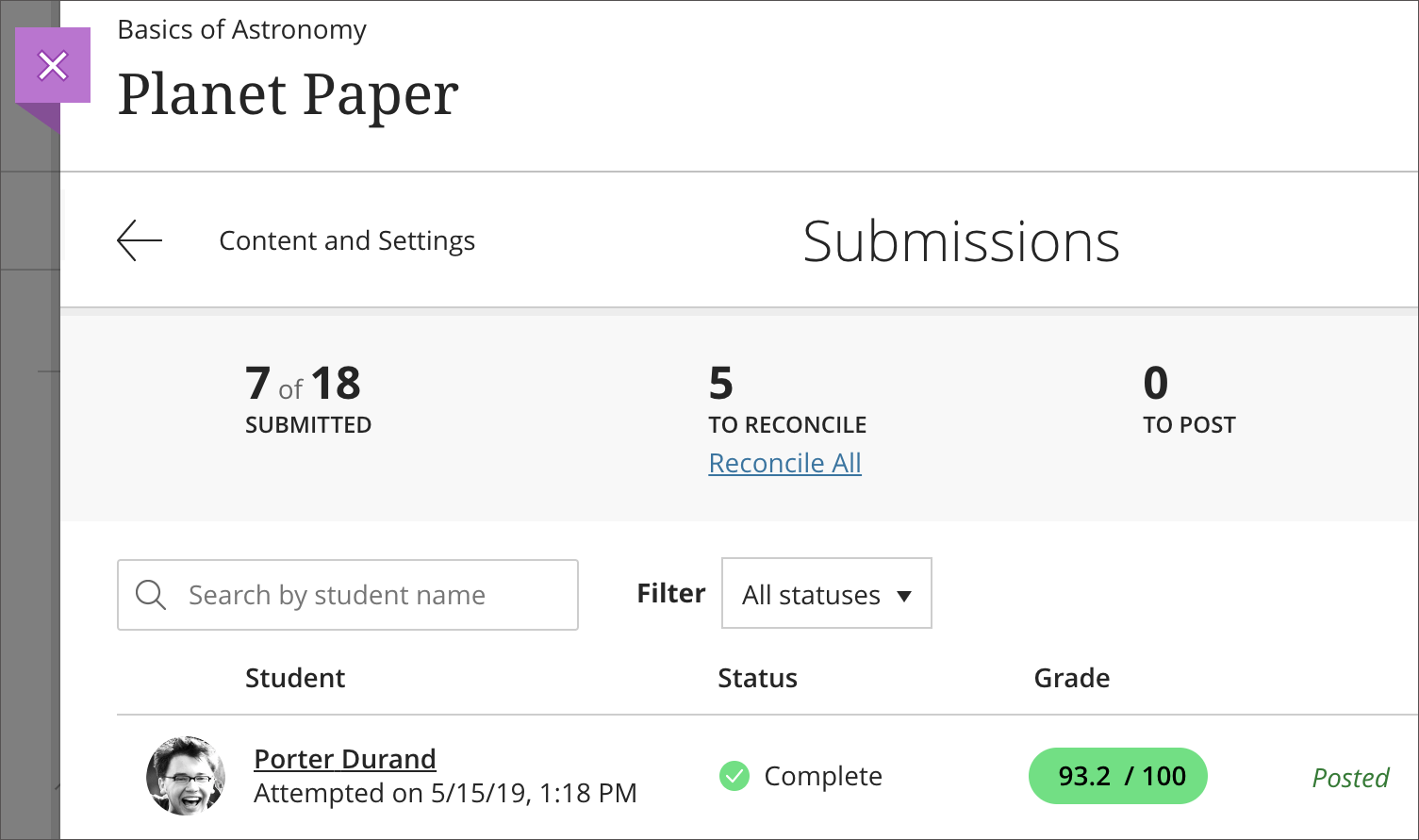
Students only see the grade, feedback, and rubric from the Reconciler. Students don't see anything provided by the individual graders.

Reconcile All
You don't have to reconcile grades individually. In one action, you can reconcile all attempts with one or more grades from graders. For example, you can "batch" reconcile if you have confidence in your Graders and want to assign the average of their grades to each attempt.
All Graders don't have to finish before you reconcile grades. You also don't have to wait for all students to make attempts. You can automatically reconcile the grades for the attempts that exist. This action is irreversible. Reconciliation doesn't override manually reconciled or previously reconciled grades.
On the Submissions page, select the Reconcile All link. Select the grade to use:
- Average of grades
- Highest of grades
- Lowest of grades
You always see that attempts are ready to reconcile if students have made attempts. Graders don't have to assign grades and feedback before the attempts are ready to reconcile.
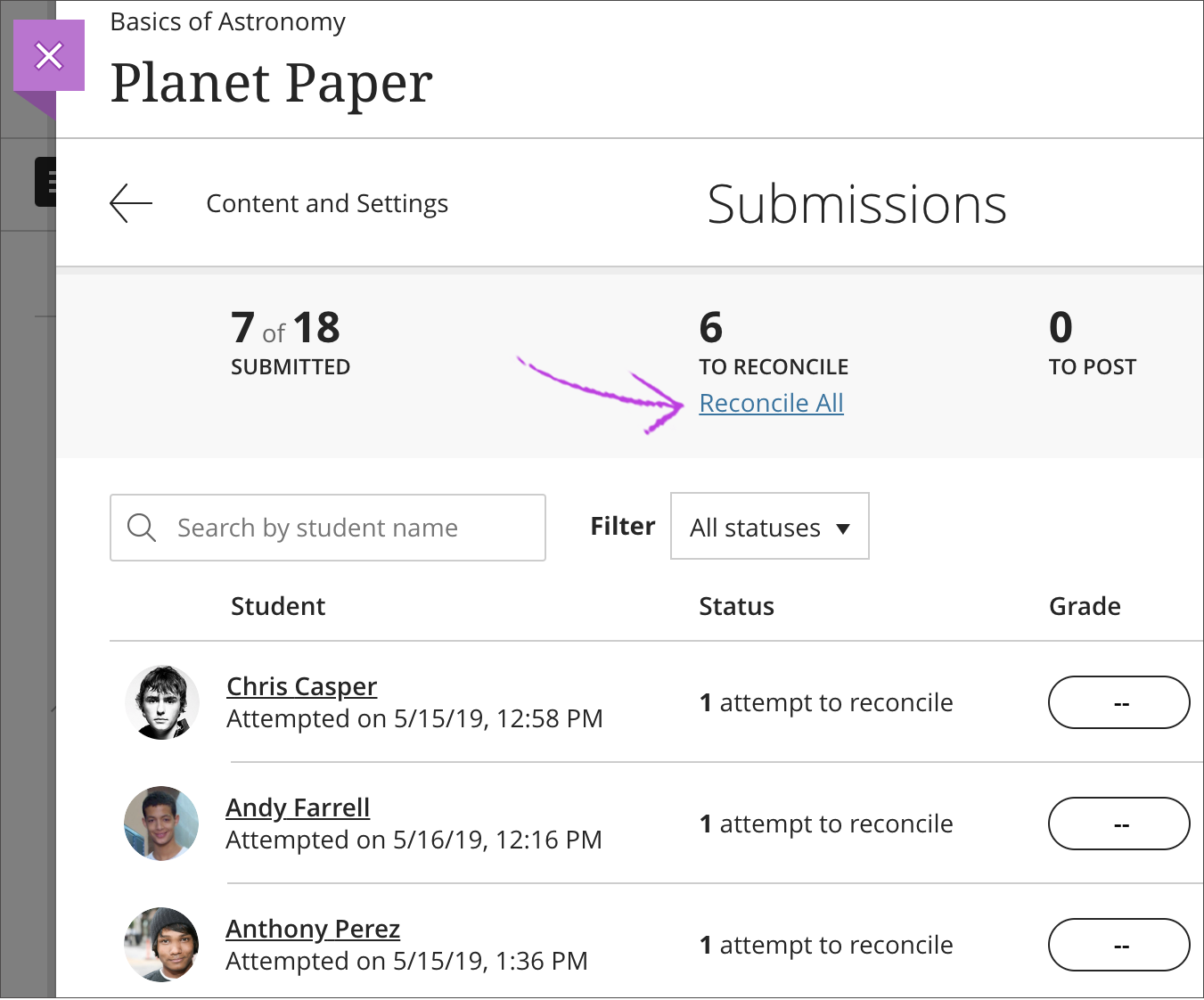
If you choose to reconcile all grades and you've associated a rubric with the assessment, an Override label appears on the Submissions list page only.
More on overriding grades.
Reconcile Multiple Attempts
When multiple attempts for an assessment are allowed, you see grades given by Graders per attempt. Then, you reconcile grades for each attempt. The final grade for a multiple attempt assessment is calculated based on the Grade attempts setting you chose when you created the assessment.
Select an attempt or the grade pill to view the student's work and reconcile the grades. You can also batch reconcile all the grades for existing attempts.
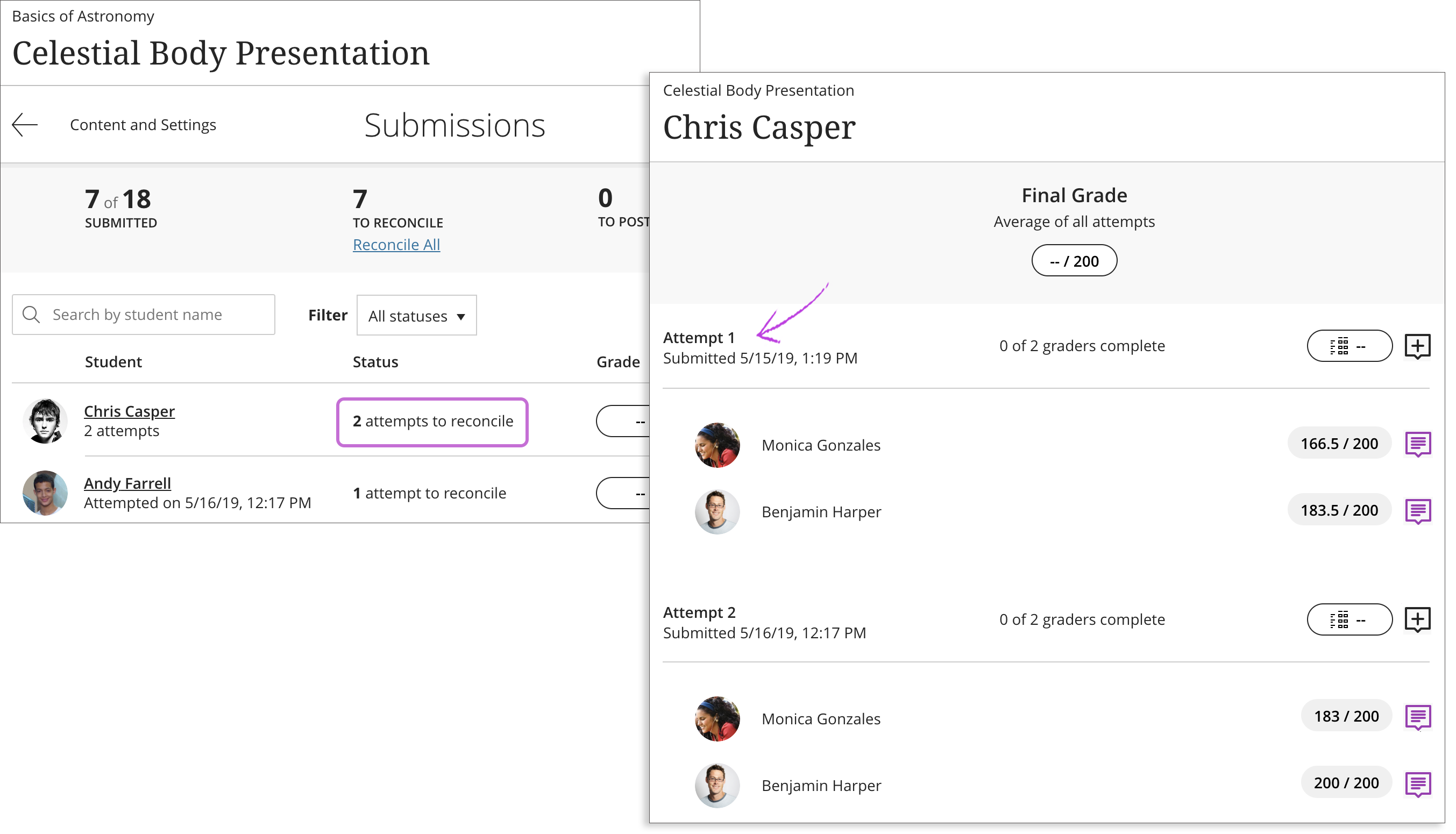
Parallel Grading doesn't impact how the final grade is calculated. However, the final grade can't be calculated until attempts are reconciled. The final grade appears in the Gradebook when those attempts are reconciled. For example, if the final grade is calculated based on the highest-graded attempt, the final grade appears immediately after at least one attempt is reconciled. But, the grade may change as students submit more attempts.
After reconciliation, you can post the final grades for students.